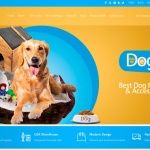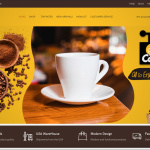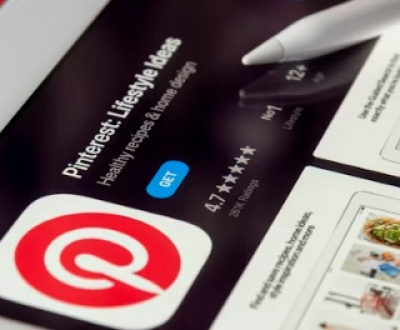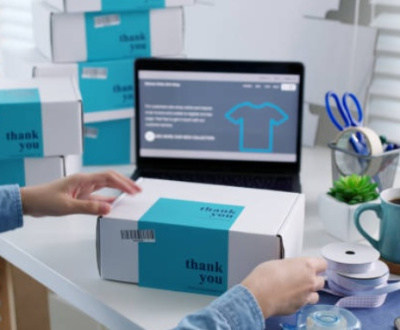Email Marketing for eCommerce Beginners
- October 11, 2024
- Dropshipping, Digital Marketing

Email Marketing for eCommerce Beginners: A Complete Guide to Boost Your Sales Hey there! If you’re diving into the world of eCommerce and feeling a bit overwhelmed by the idea of email marketing, you’re in the right place. Trust me, you’re not alone! Email marketing might seem tricky at first, but it’s one of the most effective ways to connect with your customers and boost your sales. So, let’s break it down step by step and get you started on the right foot.
Why Email Marketing Matters
First off, let’s talk about why email marketing is crucial for your eCommerce business. Imagine this: you have a shop filled with fantastic products, but how do you get people to walk through the door? Email marketing is your digital megaphone! It allows you to communicate directly with your audience, share updates, and promote special offers—all without spending a fortune. Plus, it’s a great way to build a loyal customer base who keeps coming back for more.

Email Marketing for eCommerce Beginners
Setting Your Goals
Before we jump into the nitty-gritty, it’s essential to set some goals. What do you want to achieve with your email marketing? Are you looking to increase sales, build brand awareness, or maybe improve customer retention? Setting clear, measurable objectives will help you focus your efforts and track your success. For instance, you might aim for a specific open rate (let’s say 20%) or a target number of sales from your email campaigns.
Building Your Email List
Now that you’ve got your goals, it’s time to build your email list. Think of your email list as your treasure chest—it’s where your potential customers are waiting to be engaged! Here are a few strategies to get you started:
1. Create Lead Magnets
Offer something valuable in exchange for email sign-ups. This could be a discount code, a free eBook, or an exclusive piece of content. The goal is to entice visitors to share their email addresses with you.
2. Use Sign-Up Forms
Make it easy for people to join your list. Place sign-up forms prominently on your website—consider a pop-up that appears after a few seconds or a banner at the top of your site. Just remember to keep it simple!
3. Promote on Social Media
Leverage your social media channels to drive sign-ups. Share your lead magnets and encourage your followers to subscribe to your email list for exclusive updates.

Email Marketing for eCommerce Beginners
Choosing the Right Email Marketing Platform
Once you’ve got a list to work with, it’s time to choose an email marketing platform. There are tons of options out there, but here are a few popular ones to consider:
- Mailchimp: Great for beginners, Mailchimp offers user-friendly tools and a variety of templates to help you get started.
- Constant Contact: Known for its excellent customer support, Constant Contact is another solid option, especially for small businesses.
- Klaviyo: If you’re serious about eCommerce, Klaviyo is fantastic for segmentation and automation, though it can be a bit more complex.
Take your time to explore different platforms and find one that suits your needs and budget!
Crafting Effective Email Campaigns
Now that you have your platform, let’s talk about what to send in your emails. There are several types of email campaigns you can create:
1. Promotional Emails
These are your classic sales emails. Share special offers, new arrivals, or seasonal promotions. Make sure to create eye-catching subject lines that grab attention!
2. Welcome Series
When someone subscribes, send them a warm welcome! This is a great opportunity to introduce your brand, share your story, and offer a special discount to encourage their first purchase.
3. Cart Abandonment Emails
Did someone leave items in their cart? Send a friendly reminder! These emails can be super effective in recovering lost sales.
Crafting Compelling Content
When writing your emails, keep it friendly and conversational. Use a personal tone, and don’t hesitate to inject a bit of your brand’s personality. Make sure to include a strong call to action (CTA) that tells readers exactly what you want them to do—whether it’s “Shop Now,” “Claim Your Discount,” or “Learn More.”
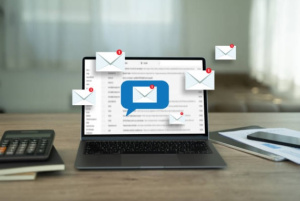
Email Marketing for eCommerce Beginners
Segmenting Your Audience
One of the best ways to improve your email marketing is to segment your audience. Not everyone on your list will be interested in the same things, so why send them all the same emails? Segmenting allows you to tailor your messages based on factors like demographics, purchase history, or engagement levels. For example, you might want to send different offers to new subscribers versus returning customers.
Automating Your Email Marketing
Automation can save you a ton of time while ensuring your emails reach the right people at the right time. Here are a couple of automated emails to consider:
- Welcome Emails: Set up a series of welcome emails that automatically send to new subscribers.
- Follow-Up Emails: After a purchase, send a thank-you email along with product recommendations to encourage future purchases.
Analyzing and Optimizing Performance
As you start sending out emails, it’s crucial to analyze their performance. Track key metrics like open rates, click-through rates (CTR), and conversion rates. This data will help you understand what’s working and what’s not.
Don’t forget about A/B testing! Experiment with different subject lines, content styles, and CTAs to see which variations perform best.
Compliance and Best Practices
Finally, remember that email marketing comes with responsibilities. Familiarize yourself with regulations like GDPR and the CAN-SPAM Act. Always get permission before sending emails and make it easy for subscribers to opt-out if they choose to.
Conclusion
So there you have it—a beginner’s guide to email marketing for your eCommerce business! Remember, the key is to start small, stay consistent, and keep learning along the way. Email marketing has the power to transform your business and connect you with your customers like never before.
Now it’s time to roll up your sleeves and get started! If you have any questions or need further tips, feel free to reach out. Happy emailing!
Harnessing the Power of Social Media for Business Growth Online



